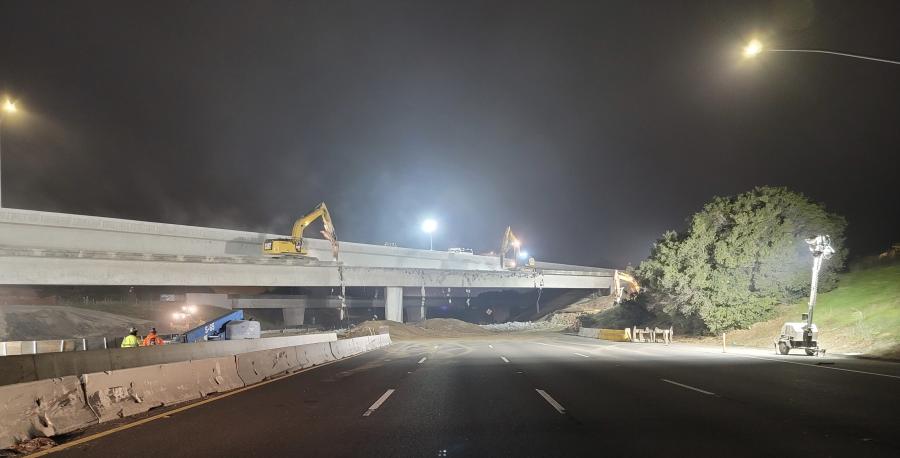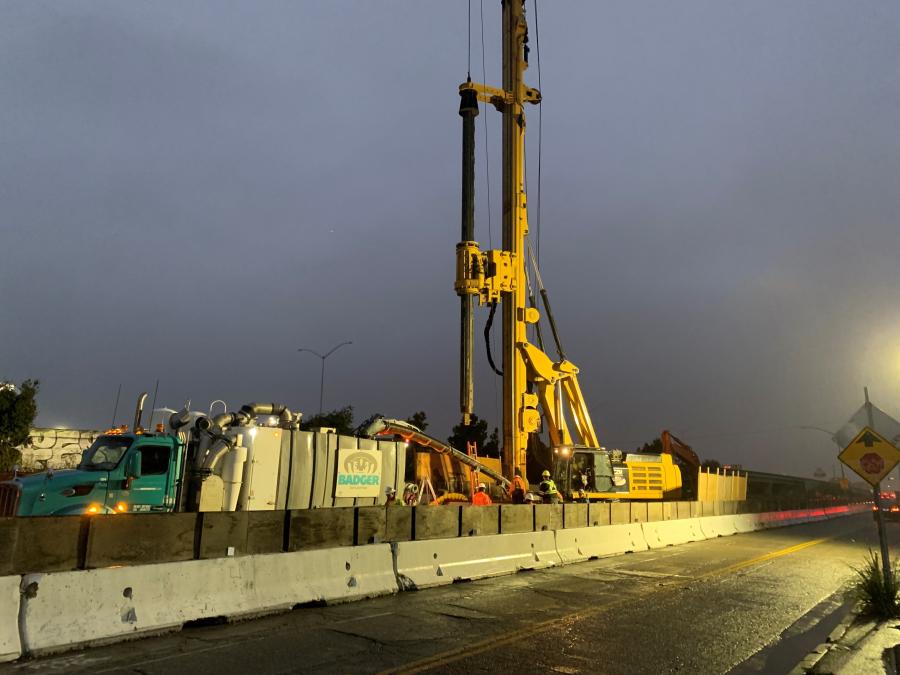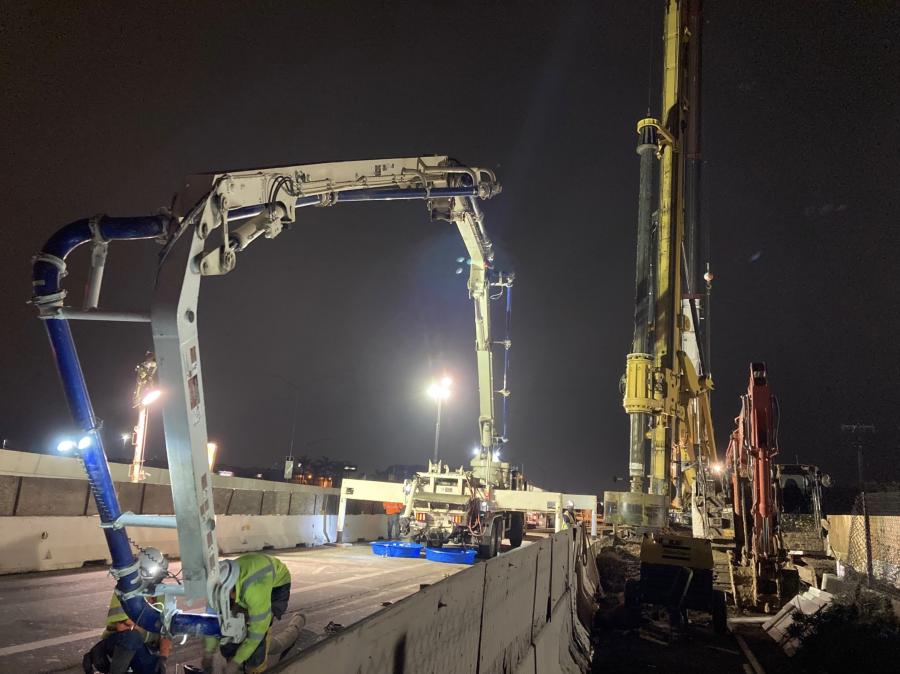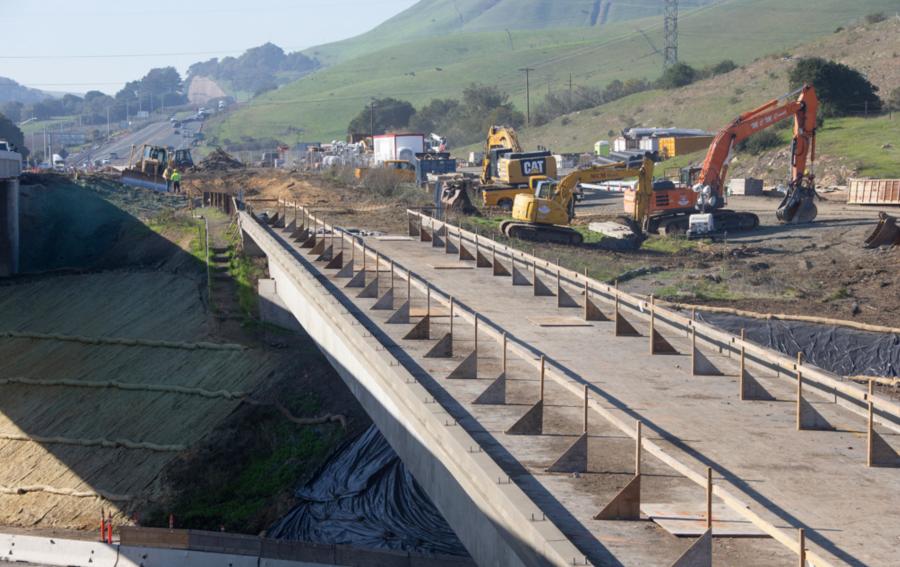Described by many as the “most dysfunctional intersection in the country,” the Gilman Interchange at the I-80 Gilman Street exit in Berkeley is being reconfigured with numerous upgrades by Golden State Bridge.
The two-phase I-80 Gilman Interchange Improvement Project — valued at $75 million and being constructed by Golden State Bridge Inc. — will reconfigure the Gilman Interchange at the I-80 Gilman Street exit in Berkeley. The project began with Phase 1 last July and is being overseen by the California Department of Transportation (Caltrans) and the Alameda County Transportation Commission (Alameda CTC).
Described by many as the "most dysfunctional intersection in the country," planning for the project began seven years ago when a concept was made public to the community. According to Berkeleyside, "The Gilman interchange at I-80 is one of the most troublesome and confusing in Berkeley with multiple entry points on either side of the freeway. Drivers often report having difficulty merging onto Gilman Street or the frontage roads and don't know who has the right of way. Cyclists and pedestrians also have to dodge traffic. The rate of collisions on Gilman by the freeway, and on the freeway on- and off-ramps themselves, is also significantly higher than the state average. Project documents describe the westbound off-ramp from I-80 as the most dangerous area of the interchange, with about two collisions per million vehicles. That's twice the statewide average."
Construction Scope
Overall upgrades include an at-grade pedestrian/bicycle path through the interchange, a two-way cycle track on Gilman Street from the interchange to Fourth Street and a new traffic signal at Gilman and 4th streets.
Phase 1 work (currently in progress) will see the construction of a bicycle/pedestrian overcrossing south of Gilman Street similar to the crossing over I-80 at University Avenue. Crews already have utilized crawler cranes, hydraulic cranes, drill rigs, excavators, loaders and backhoes, some of which are manufactured by Bejac, Link-Belt, Liebherr, Komatsu and John Deere.

"Bay Cities Paving and Grading has performed pavement removal on the ramps and frontage roads and installed drainage systems in the southern half of the job site," Mike MacLeod, Golden State's project manager, said. "Hillside Drilling Inc. is currently working on constructing the cast-in-drilled-hole [CIDH] piles for the retaining wall foundations at the approaches. Pacific Coast Drilling Company is currently constructing the large diameter CIDH piles at the abutments and bents for the pedestrian overcrossing. CMC Rebar has fabricated reinforcing steel [rebar] for all the CIDH piles, and fabricated / installed rebar at portions of the first"
New material being brought in includes approximately 5,100 cu. yds. of concrete, 780 tons of rebar and 65 tons of structural steel.
"We're dealing with overall equipment servicing," said MacLeod. "For simple fixes, repairs can be done within a day or two. We don't have mechanics 100-percent on-site, but we have mechanics on-site weekly. The key to maintenance is staying on top of service."
Golden State Bridge purchases and rents equipment from Cresco Equipment Rentals, Herc Rentals, United Rentals, Bejac, Terex, Tri-Valley Tractor and others.
"They are helping by supplying the job with functional equipment," said MacLeod. "Solid relationships with our dealerships are very important. Sometimes you need a piece of equipment or to repair equipment quickly, so if you have a good relationship, they can respond quickly."
Job Phases
The new infrastructure for Phase 1 was designed by Parsons. A key design element is that cyclists will be able to cross the freeway, below and above it, with the pedestrian/cyclist bridge adopting many of the design features that were included in the upgrade of the Bay Bridge.
Karen Parolek, who served on the ATAC committee that studied the design, is also a keen cyclist and represented the concerns of many. The bridge will have one bike lane in each direction and a lane for pedestrians.
"There's plenty of room for everyone, which is great," she said.
For pedestrians walking under I-80, the situation is being improved by enclosing the open areas beneath the underpass through the installation of concrete walls and a lighting system that creates the impression of daylight. Cyclists will be given two lanes at grade and pedestrians will have a separate lane.
The project also will improve bicycle access from the bike bridge to Fourth and Gilman streets, said Parolek. There will be a bidirectional bike path on the south side of Gilman as well as a new signaling system to allow cyclists to cross over Gilman Street and connect with bike paths going to Harrison Park, the Gabe Catalfo soccer fields and University Village in Albany. Currently, there are only bike lanes on Gilman east of Second Street.

"The structure includes a 230-foot-long tied arch, spanning both directions of I-80 with no center support," said Janis Mara, a public information officer with Caltrans District 4. "On each end, the bridge must turn abruptly 90-degrees to tie into the approaches which climb up to the main span parallel to I-80. This complex configuration required sophisticated 3D computer analysis beyond the typical bridge to evaluate its strength, response to pedestrian [feet] induced vibrations and seismic performance. Additionally, bridge and retaining wall foundations fell within a few of the existing 36-inch pressurized sewer lines. To avoid a costly relocation, the project team worked closely with the utility owner, EBMUD, to develop extensive protection measures during construction, including vibration monitoring, and ran 3D computer analysis to evaluate the potential impact on the sewer line during an earthquake."
The new bridge and road work was designed to have a minimum 75-year lifespan, being able to withstand seismic activity was a given.
"The structure is located only a few miles from the Hayward Fault and is founded in soils with the potential to liquefy during a strong earthquake," said Mara. "Therefore, seismic activity is a critical part of the design, particularly to ensure the performance of the steel arch components and foundations. The team developed site-specific earthquake motions in both horizontal and vertical directions and subjected a detailed 3D computer model of the bridge to numerous simulated earthquakes to ensure the structure is resilient to the high seismicity in this area.
"The bridge itself is composed of conventional materials — steel and reinforced concrete," she added. "However, lightweight cellular concrete was used for the approach embankments — in lieu of heavier compacted soil to economize retaining wall design and improve seismic performance.
"Caltrans project staff will facilitate planning meetings between both jobs to manage lane closure requests and to address any scheduling conflicts that arise," she added. "Caltrans is using CHP units under our COZEEP [Construction Zone Enhanced Enforcement Program] agreement, and a work zone speed reduction system to reduce the speed limit by 10 mph to 55 mph through the work zone on I-80. Generally, the public is slowing through the work zone speed reduction area.
"Caltrans requires that a buffer lane be closed as well as the lane or shoulder in which work is physically occurring. This additional reduction in open lanes also contributes to lower speeds when there is moderate traffic volumes. As traffic volumes reduce in the overnight hours, traffic speeds increase, which is why Caltrans uses static COZEEP units within the lane closures and roving COZEEP units to enhance safety and reduce speeding through the work zone."
Project Challenges
"Differing site conditions resulting from the fill material used along the former shoreline of San Francisco Bay are always a challenge for the foundation work," said Mara. "The project has encountered layers of small boulders, and areas of buried municipal trash that have impacted material handling/disposal and CIDH pile construction. The trash layers have resulted in unstable side walls of the CIDH piles requiring a change in construction method to a cased hole during drilling and pouring of the CIDH piles. Supply chain delays have increased delivery times for certain materials [retaining wall form liners, for example] but the project team has so far been able to anticipate and accommodate these impacts through advance planning and good communication between the suppliers, prime contractor and Caltrans.
"These issues are raised and resolved using the claims process established in the Caltrans standard specifications," she added. "Any issue identified in the field that cannot be immediately addressed by field personnel follows this process. The contractor initiates the process by submitting a Request for Information [RFI] to Caltrans. If there is a disagreement regarding the cause of the issue or responsibility or cost, then the contractor can elevate the issue as a Potential Claim Record to the Dispute Resolution Board [three independent project technical advisors] or a Dispute Resolution Advisor [a single project technical advisor, used on smaller projects]. If a resolution still cannot be reached then the claimed issue can be resolved through the post-acceptance claims process [Board of Review or arbitration]. To-date, Caltrans and the contractor have been able to reach an agreement on all issues."
Phase 1 is on schedule.
"Site conditions and utility conflicts have added approximately three weeks to the internal milestones and project completion dates so far," said Mara. "The two phases of the Gilman Project require utility relocations to be performed by the utility owners [Pacific Gas and Electric (PG&E)] and East Bay Municipal Utility District [EBMUD] or by the contractor. We have had to work through unanticipated conflicts between buried utilities and the planned work, as well as overhead utilities and guy wires that were not able to be removed by the utility owners before the contract work started."
The ongoing work is following the basic plan — utility relocations, underground utility/facility installation, structure foundation work; structure footing / column work; retaining wall construction; falsework installation, superstructure construction over I-80; approach paving, concrete flatwork and electrical/lighting/ramp metering installation.
"Phase 2 is a heavily-staged contract with multiple traffic switches on several local roads, as well as on Gilman Street in and around I-80," said Mara. "Within each stage, utility/facility relocation and installation work, as well as roadway structural section and sidewalks, are constructed.
"The tied-arches will be prefabricated by Thompson Metal Fab [TMF]," Mara added. "Prior to installation on bridge, TMF will first shop assemble the steel arches to check for proper fit-up and finished geometry. Thus far, none of the prefabricated parts have been constructed."
The main subcontractors are Pacific Coast Drilling Company, Hillside Drilling, CMC Rebar, Bay Cities Paving and Grading, Mike Brown Electric, T&S DVBE, Farwest Safety and Schwager Davis. CEG
Irwin Rapoport
A journalist who started his career at a weekly community newspaper, Irwin Rapoport has written about construction and architecture for more than 15 years, as well as a variety of other subjects, such as recycling, environmental issues, business supply chains, property development, pulp and paper, agriculture, solar power and energy, and education. Getting the story right and illustrating the hard work and professionalism that goes into completing road, bridge, and building projects is important to him. A key element of his construction articles is to provide readers with an opportunity to see how general contractors and departments of transportation complete their projects and address challenges so that lessons learned can be shared with a wider audience.
Rapoport has a BA in History and a Minor in Political Science from Concordia University. His hobbies include hiking, birding, cycling, reading, going to concerts and plays, hanging out with friends and family, and architecture. He is keen to one day write an MA thesis on military and economic planning by the Great Powers prior to the start of the First World War.
Read more from Irwin Rapoport here.
Today's top stories



















